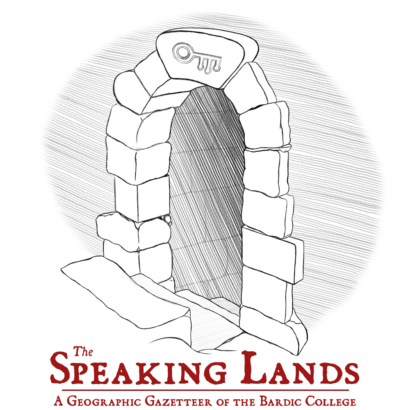Who doesn’t need a little more magic in their lives? People hookwinked by glamours, that’s who. But the illusory nature of glamours has more uses than trickery, and exploring this fascinating field of wizardry is the subject of this week’s Gazeteer entry.
—
GLAMOURS
Wizardries can change appearances without changing the underlying reality by a number of means. Of course, outside the magical community, the distinctions between changing how light refracts and ensorcelling people’s perceptions and creating standing illusions are lost on the majority of the populace. All of these effects, regardless of mechanism, are referred to as glamours.
The various means of casting a glamour differ in terms of difficulty, duration, and necessary preparation. Some require the consent of the subject or the beguiled audience; many do not. Some methods are only possible in certain applications: one can fascinate an audience to believe a hulking erdgeist is actually a small child, but one cannot cloak the large erdgeist with the much smaller image of a child.
Glamours are often cast on items which confer their illusory effects on the wearer or bearer. When so enchanted, the item itself always remains visible, and is often incorporated into the illusion. For the child who is actually an erdgeist, the glamour might be bound to the bow in her hair. Glamours can be bound to all manner of items, although once-living materials accept enchantments better. Morascaye barkcloth, created from treewalkers, is particularly favored for this use, as it not only holds enchantment longer but with lasting fidelity.
Regardless of their mechanism, glamours are typically trivial to dispel. The difficulty is in knowing there is a glamour to dispel in the first place: all but the crudest glamours mask their own magical natures as part of the enchantment. Glamours are far more likely to be identified by missing or incorrect details. Morgan Ramshorn famously describes their own attempt to fool a den of ogres with a very convincing glamour only to realize, too late, that the glamour had not masked their scent, which led to their discovery and nearly their death. Glamours bound to physical items can still be dispelled, although only for a time; the illusion usually reasserts itself within an hour or so.
Glamours are often seen as low-class magic, especially since it is so easily used for deception or fraud and its practitioners are seen as untrustworthy. Goblins are especially saddled with this stereotype. Humans may employ glamours to take on the features of a different people, such as elves or dwarves, to avoid the social stigma they might otherwise suffer. People throughout Verdas use glamours to take on elephantine features, not as deception but as fashion.
The industraza ballad Faces for Facing perhaps best exemplifies the profoundly ambivalent views that society has regarding glamours. The song describes a single day of a goblin and how she puts on many faces for the many people she deals with, most of whom hold power over her and she must appease. Most of the glamours she casts are presented as morally questionable but also existentially necessary. The last glamour, which she casts for the knowing enjoyment of her lover, is presented as innocent and gratifying, and its verse serves as a conclusion to the song and her trying day.
—
But now let us turn our eyes to the next entry we’ll check out from the Gazetteer of the Speaking Lands. This poll’s going for a bit longer than normal—all the way into next year—to account for the holidays.
Speaking of which, I’d like to wish you all a very happy winter break and all the warmth and joys of whichever holidays you might celebrate. I’ve really appreciated those of you who’ve stuck with this patreon as it’s shifted wildly into new content, and I hope you’ll stick around for where we go in the upcoming year.
Many thanks and best wishes,
—Josh
